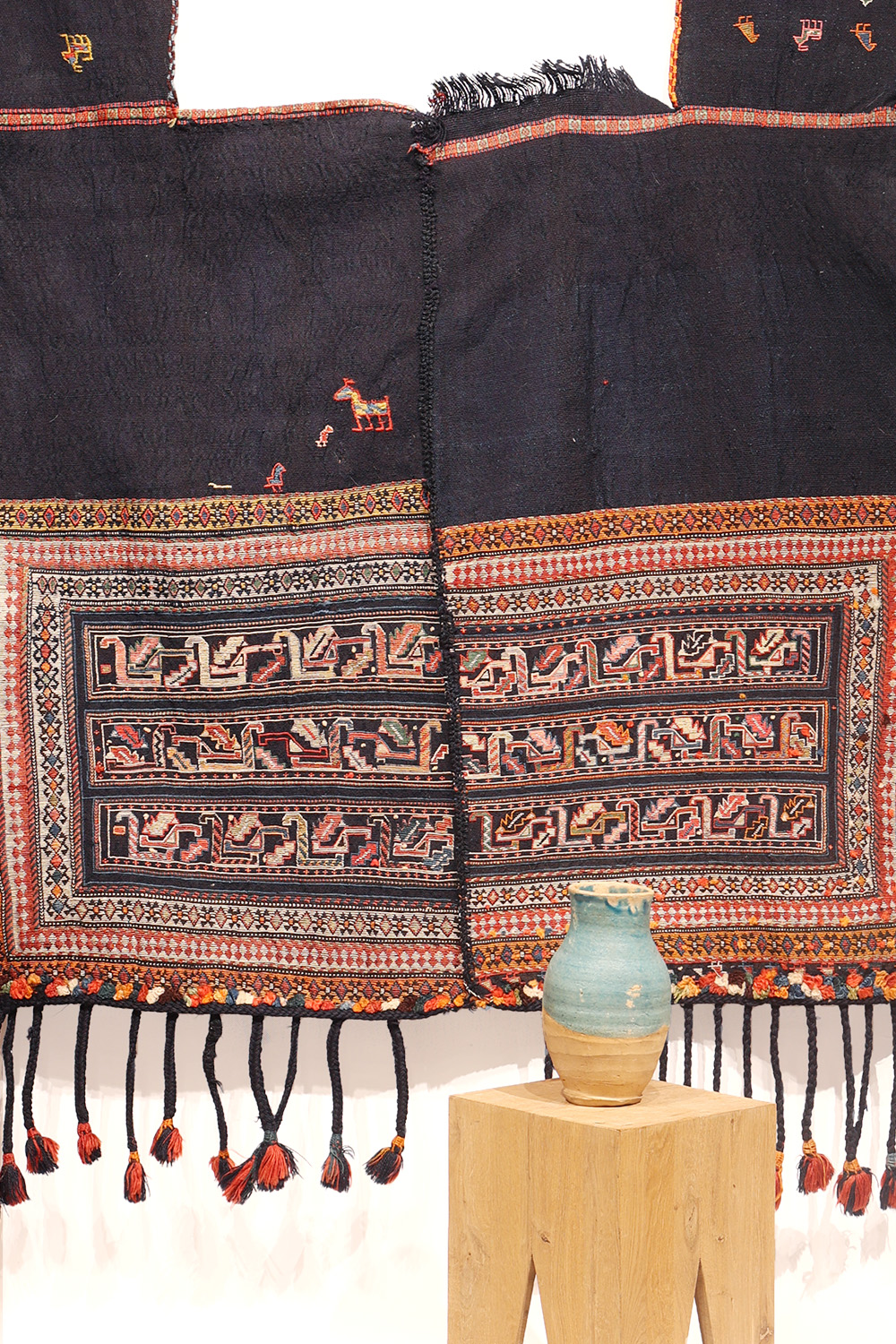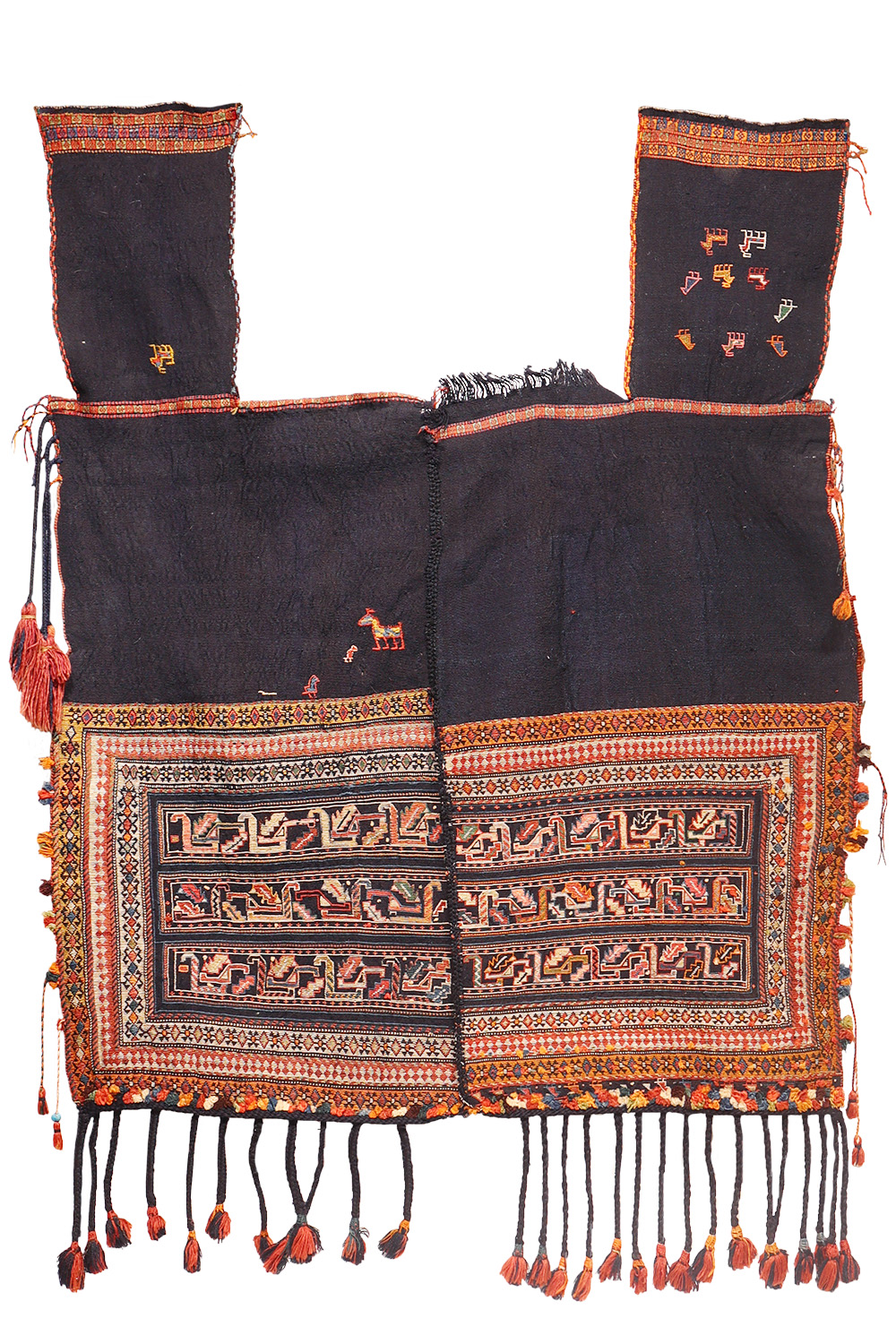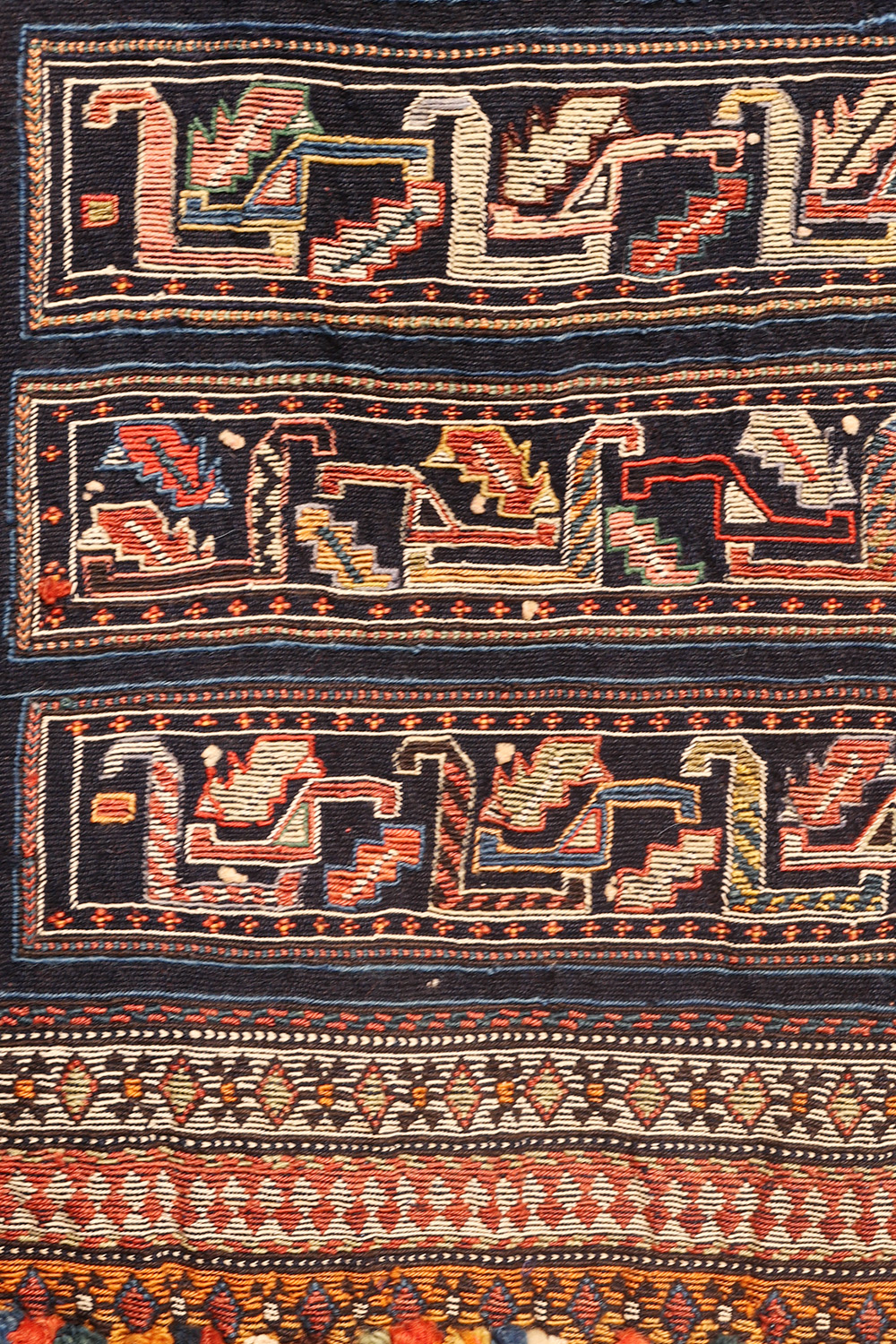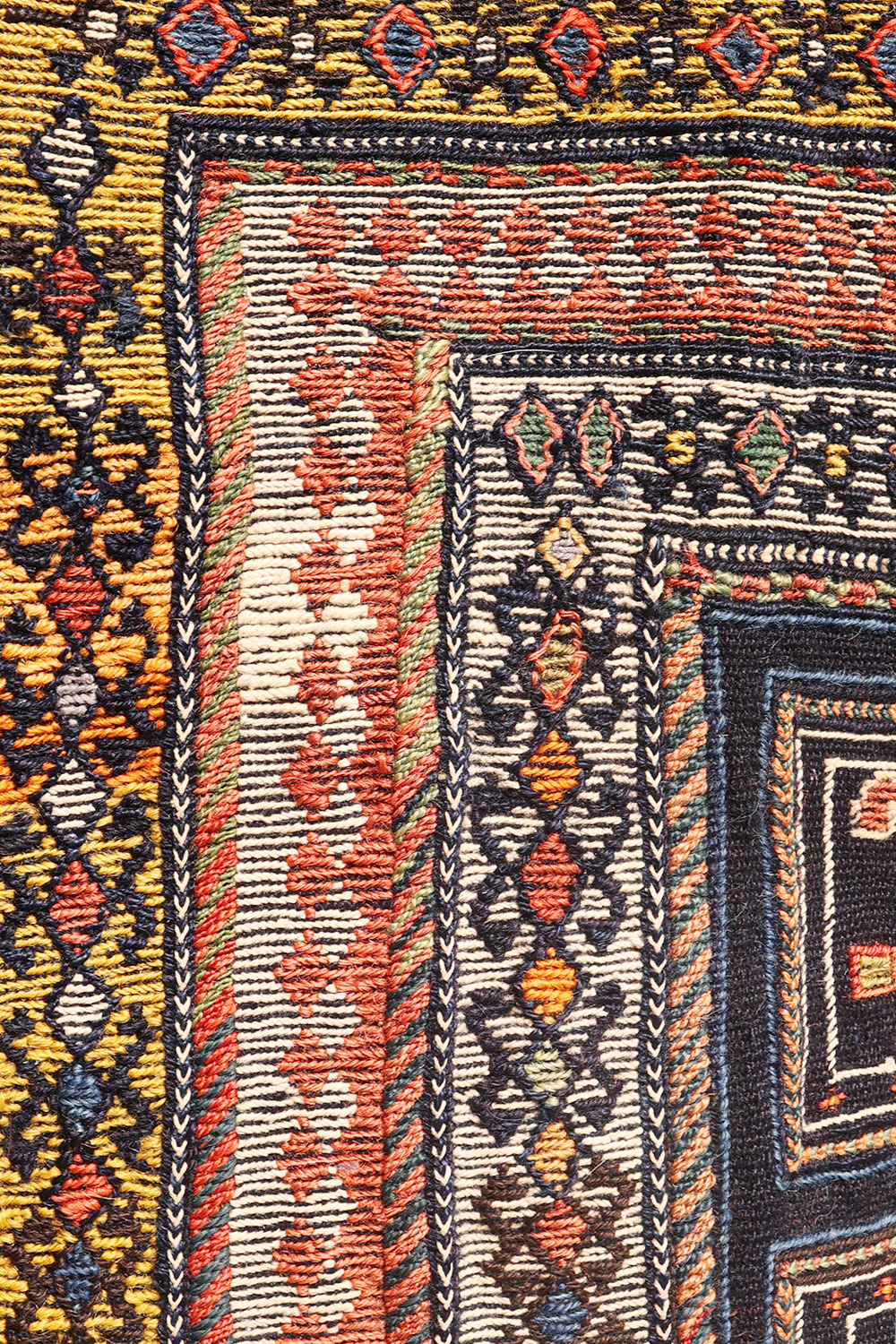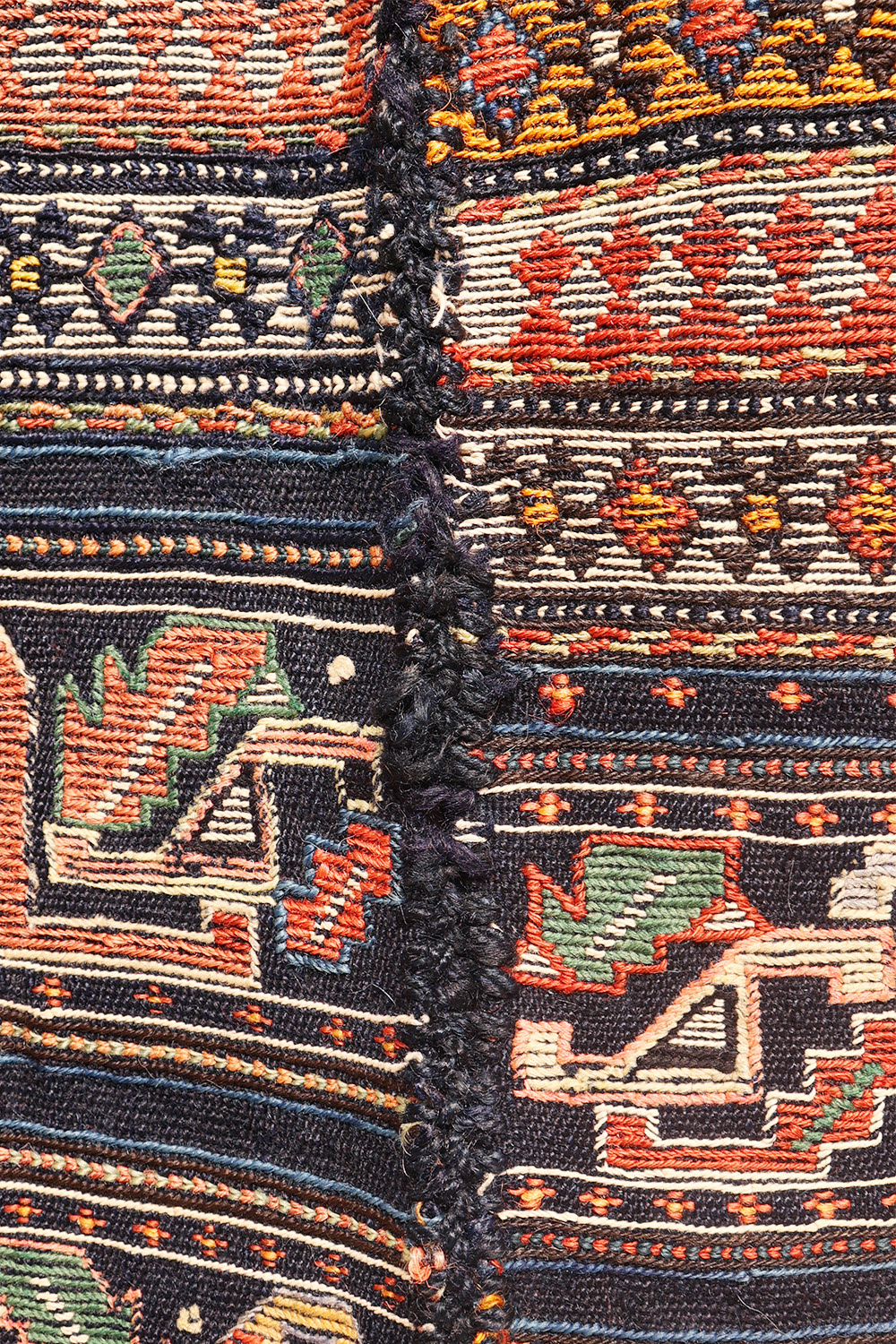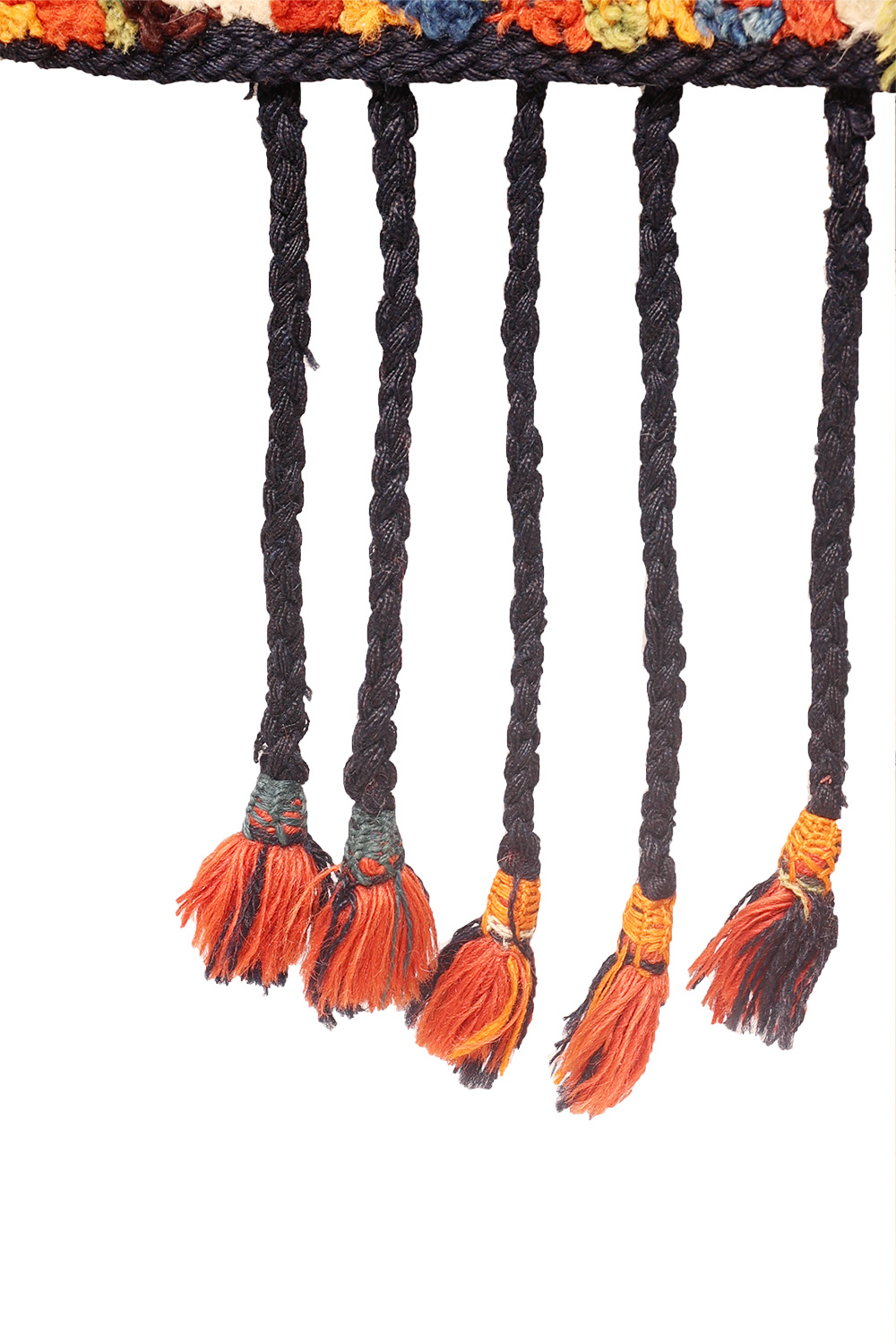1,250.00 €
Exquisitely Detailed Iranian Qashqai Horse Blanket (Jol)
This Iranian jol, or horse blanket, is a testament to exceptional craftsmanship, woven with very finely spun wool. This meticulous process allowed the weaver to achieve a remarkably detailed pattern that immediately captures the eye.
The main field features intriguing central motifs: are they birds, dragons, or other fantastical creatures? Their mysterious forms add a captivating element to the piece. In contrast, the multiple borders surrounding the field present more geometric and traditional patterns, creating a beautiful balance. You’ll also notice small animal motifs scattered within the blue field, which appear to be later additions and aren’t as finely rendered as the original designs.
For the white areas, the weaver skillfully incorporated cotton instead of wool to achieve a purer, more vibrant white hue. The ends of the jol are elegantly finished with long, plaited tassels, adding a refined touch to this unique textile.
For a very similar example, please check James Opie´s “Tribal Rugs”, pages 180 and 181.
Material: 100% hand-spun sheep wool and cotton (white areas)
Size: 160×132 cms
Origin: Kashkuli tribe, Iran
Date of weaving: 1920-40
Jol or horse blanket
The word Jol in Farsi us used for a horse blanket or cover. A jol is put over a horse either to protect it from the cold in the winter or at night, after a long gallop or after it has been perspiring intenselly.
Besides keeping a horse wam, a jol is meant to be the horse´s ceremonial garnment in weddings, national festivities and official visits. Just as the horseman will don his best clothes, so he decorates his horse with the best of his jol.
Kashkuli tribe
The Kashkuli tribe, a subtribe of the Qashqai people, originates from the southwestern region of Iran. This Turkic group, which still speaks a Turkish dialect today, leads a semi-nomadic lifestyle, primarily based in and around Shiraz. During the summer months, they migrate into the mountains of Fars province, bringing with them their rich tradition of rug weaving.
The Qashqai people, who have inhabited southwestern Persia for centuries, originally came from Central Asia and the Caucasus. This diverse heritage has influenced their culture and craftsmanship, resulting in a unique blend of regional influences visible in their rugs.
Kashkuli rugs, also known as Keshkuli rugs, are renowned as some of the finest examples from the nomadic weaving community. These rugs are celebrated for their intricate designs, superior materials, and the exceptional skill of Kashkuli weavers.
Kashkuli rugs are admired for their intricate patterns and use of high-quality materials. Traditional geometric motifs, playful yet rich in history, are common in these designs, reflecting the tribe’s cultural legacy. Woven entirely from wool, with a fine weave and dyed using natural colors, Kashkuli rugs are not only visually striking but also durable and comfortable underfoot.
Distinctive features of Kashkuli rugs include the ‘Boteh’ design, which is also found in Senneh and Caucasian rugs. Another notable motif is the “Herati” pattern. Together with the fine, soft wool, these designs create a unique aesthetic and tactile experience, making Kashkuli rugs highly sought after.
Additional information
| Weight | 2.9 kg |
|---|
Subscribe and receive the lastest news
